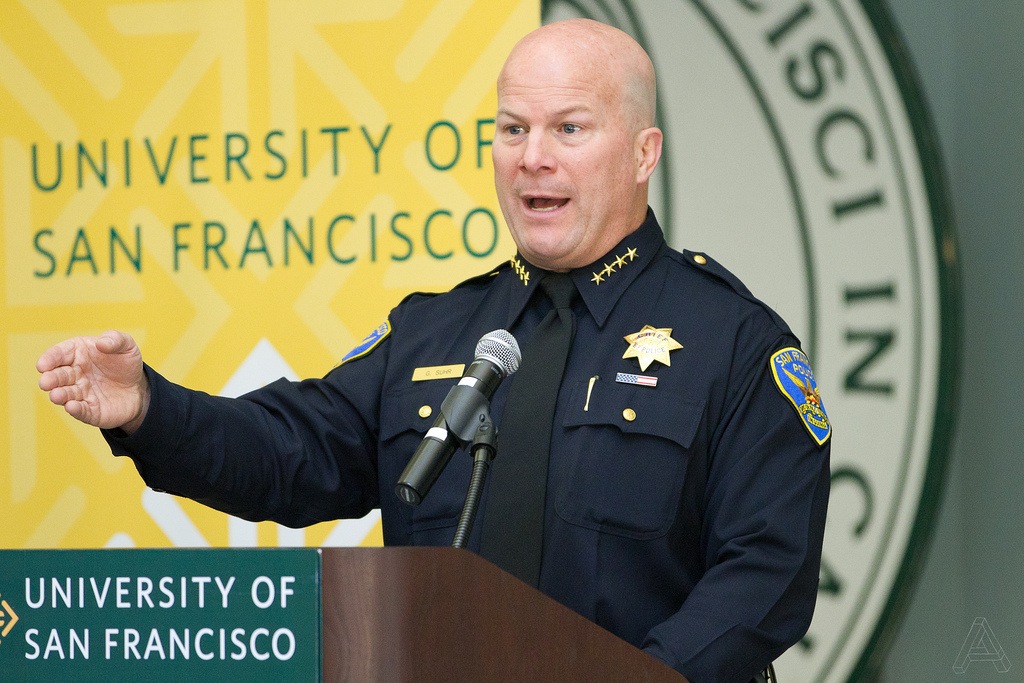San Francisco Mayor Ed Lee and Police Chief Greg Suhr announced police policy and procedural changes aiming to reduce police shootings by 80 percent. In addition to this tangible goal, the city’s police department hopes the changes will rebuild the community’s trust in the police force following tragic shootings such as the killing of Mario Woods on the second of December, 2015.

At the forefront of the procedural changes is the method for treatment of suspects armed with knives. According to Lee, new procedures aim to non-violently deescalate the situation in a scenario with a person wielding a knife. The catalyst of this specific change was Mario Woods’ murder at the hand of the police. On a city block, Woods was demanded to put down his knife. When he didn’t respond, he was pepper sprayed and shot four times with bean bag bullets. In his intoxicated state, this had little effect on Woods, who continued to wave around a knife. The police’s next response was to take fire at Woods, who was soon shot over 20 times and died instantaneously. The incident, which drew a lot of backlash, particularly from the Black Lives Matter movement, has led to some specific policy changes. Suhr and Police Commissioner President Suzy Loftus stated that now, officers will always be armed with helmets and other gear to protect themselves from a knife, as well as non-lethal weapons like batons and beanbag bullets, to subdue these suspects. In addition to changes in policy for knife-wielding suspects, mayor Lee announced a ban on chokeholds. Police are also now prohibited from shooting at cars. Finally, the city aims to make policemen more accountable for their actions and their use of force. Police hope to supply offers with body cameras by the end of the year. Additionally, officers are now required to fill out an incident report every time they draw their gun and point it at a suspect. Previously, incident reports were only required in instances where an officer red their weapon.
Finally, training is a major part of these new policy changes. Firearms qualifications are required for police officers every six months. However, with these new policies, officers will also engage in eight-hour sessions to remain qualified. According to their statement, these sessions include training on how to limit gunfire to only when it is absolutely necessary. Officials also seek to resolve tensions between police and the community. The city hopes to encourage and recruit people of color to become a part of law enforcement. Additionally, city officials want to expand a program that helps young people from neighborhoods affected by violence to reach out and work closely with the police moving forward.
Critics of the movement say that these changes will make the job of a police officer even more dangerous. Additionally, the SF Police Officer’s Association, the union representation for city policemen, was largely absent in the negotiation for these changes. Many members of the police department immediately condemned the policy changes, claiming that they “haven’t been properly negotiated and may endanger police.” The police union expressed a similar sentiment, although it did see the merit of the policy overhaul. Union head Martin Halloran notes, “although some of the policies may be good ones — some of the policies may expose our members to harm. We are not going to let that happen.” This is a legitimate concern, as the safety of all parties, both on duty officers and the citizens they protect, need to be preserved.

Proponents, such as the Black Lives Matter group, hope these changes will reduce police shootings, particularly of unarmed or knife wielding assailants. The National Association for the Advancement of Colored People (NAACP) also praised the city’s efforts, and will continue to hold the police force accountable for their behavior. Reverend Amos Brown, president of the San Francisco NAACP branch, promised: “… the NAACP will be watching to make sure these words do not ring hollow.”
Overall, these changes seem to be part of a movement sweeping the nation. In the Bay Area community, this movement extends beyond San Francisco as well. Oakland councilmen recently proposed a series of gun control restrictions that apply to the general population as well as the police force. For example, lawmakers are looking to ensure that guns in police cars are either disabled or stored in locked boxes to prevent theft. Stolen guns from police have been utilized in numerous homicides throughout the Bay Area. Most recently, Antonio Ramos, an artist working in West Oakland, was shot and killed back in September using a gun stolen from U.S. Immigration and Customs Enforcement. In fact, an NBC Bay Area investigation claims that more than 500 weapons have gone missing from eight local law enforcement agencies since 2010. These statistics, in addition to the deaths of people like Woods and Ramos, are highly alarming and underscore the need for change.






